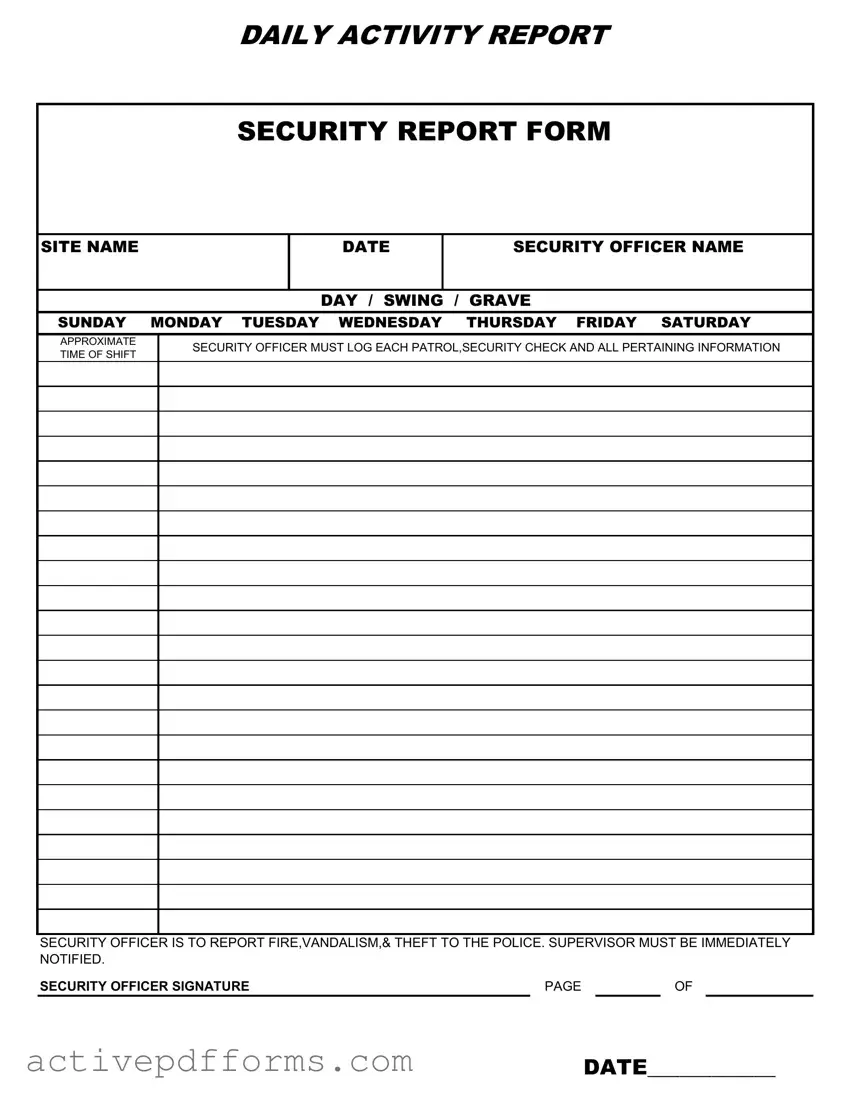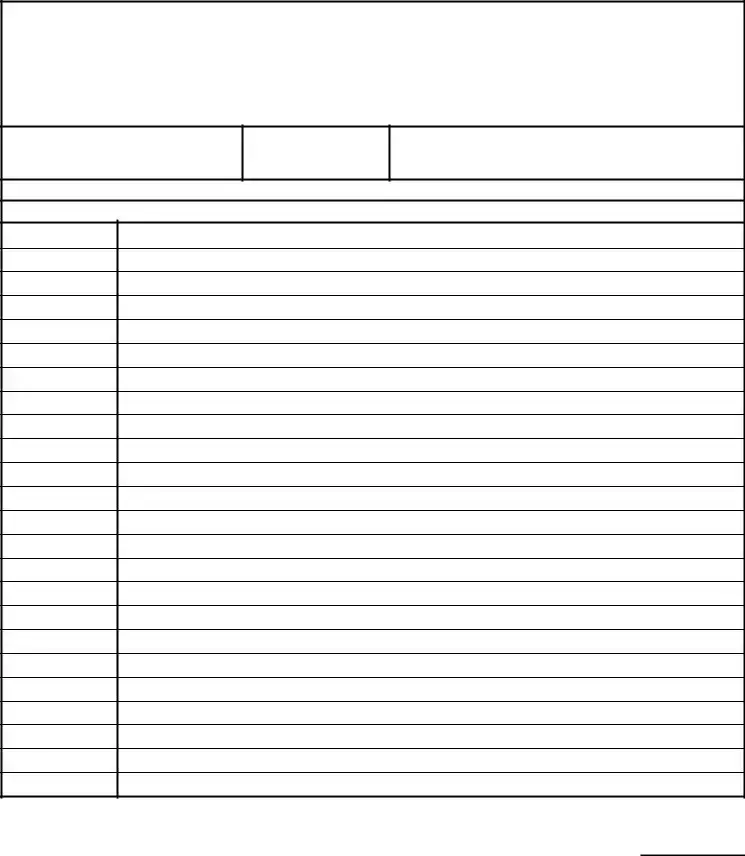Free Security Guard Daily Report Sample PDF Template
The Security Guard Daily Report Sample form is a crucial document used by security personnel to log their daily activities, observations, and incidents. This form systematically captures details such as the site name, date, security officer's name, shift timings, and day of the week, ensuring that every patrol, security check, and significant event is meticulously recorded. It mandates reporting critical incidents like fire, vandalism, and theft to the police and immediate notification to the supervisor, highlighting the importance of communication and documentation in maintaining security.
Edit Security Guard Daily Report Sample Now

